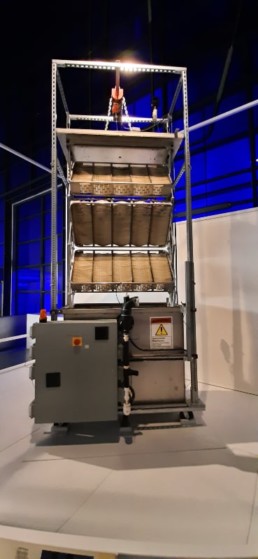Cambridge Zero presents “Solar & Carbon geoengineering”
Cambridge Zero is an interdisciplinary climate change initiative set up by the University of Cambridge. Its focus is research and policy, which also includes science communication through courses, projects, and events.
One of such events was a 29-Mar-2021 panel and discussion on geoengineering as a way of mitigating / offsetting / reducing global warming. Geoengineering has been a relatively popular term in recent months, mostly in relation to a high-profile experiment planned by Harvard University and publicised by the MIT Tech Review… which was subsequently indefinitely halted.
I believe the first time I heard the term was at the (monumental) Science Museum IMAX theatre in London, where I attended a special screening of a breathtakingly beautiful and heartbreaking documentary titled “Anote’s Ark” back in 2018. “Anote’s Ark” follows a then-president of the Republic of Kiribati, Anote Tong, as he attended multiple high-profile climate events trying to ask for tangible assistance to Kiribati, which as at a very realistic risk of disappearing under the waters of the Pacific Ocean in coming decades, as its elevation over the sea level is 2 meters at the highest point (come to think about it, Maldives could face a similar threat soon). Geoengineering was one of the discussion points among the scientists invited to the after-movie panel. I vividly remember thinking about the disconnect between the cutting-edge but ultimately purely theoretical ideas of geoengineering and a painfully tangible reality of Kiribati and its citizens, who witness increasingly higher waves penetrating increasingly deeper inland.

Prototype of CO2-capturing machine, Science Museum, London 2022
Geoengineering has all the attributes needed to make it into the zeitgeist: a catchy, self-explanatory name; explicit hi-tech connotations; and the potential to become the silver bullet (at least conceptually) that almost magically balances the equations of still-rising emissions with the desperate need to keep the temperature rise as close to 1.5 Centigrade as possible.
The Cambridge Zero event was a great introduction to the topic and its many nuances. Firstly, there are (at least) two types of geoengineering:
- Solar (increasing the reflectivity of the Earth to reflect more and absorb less of the Sun’s heat in order to reduce the planet’s temperature);
- Carbon (removing the already-emitted excess CO2 from the atmosphere).
The broad premise of solar geoengineering is to scatter sunshine in the stratosphere (most likely by dispersing particles of highly reflective compounds or materials). While some compare it to a result of a volcano explosion, the speaker’s suggestion was to compare it to a thin layer of global smog. The conceptual premise of solar geoengineering is quite easy to grasp (which is not the same as saying that solar geoengineering itself is in any way easy – as a matter of fact, it is extremely complex and, in the parlance of every academic paper ever, “further research is needed”). The moral and political considerations may be almost as complex as the process itself. There is a huge moral hazard that fossil fuel industry (and similar vested interests, economic and political) might perform a “superfreak pivot”, going from overt or covert climate change denial to acknowledging it and pointing to solar geoengineering as the only way to fix it. Consequently, these entities and individuals would no longer need to deny the climate is changing (which is becoming an increasingly difficult position to defend these days), while they could still push for business as usual (as in: *their* business as usual) and delay decarbonisation.
The quote from the book Has It Come to This: The Promises and Perils of Geoengineering on the Brink puts is brilliantly: “Subjectively and objectively, geoengineering is an extreme expression of a – perhaps *the* – paradox of capitalist modernity. The structures set up by people are perceived as immune to tinkering, but there is hardly any limit to how natural systems can be manipulated. The natural becomes plastic and contingent; the social becomes set in stone.”
The concept is carbon geoengineering is also very straightforward (conceptually): to remove excess carbon from the atmosphere. There are two rationales for carbon geoengineering:
- To offset carbon emissions that – for economic or technological reasons – cannot be eliminated (emissions from planes are one example that comes to mind). Those residual emissions will be balanced out by negative emissions resulting from geoengineering;
- To compensate for historical emissions.
The IPCC special report on 1.5°C states unambiguously that limiting global warming to 1.5°C needs to involve large-scale carbon removal from the atmosphere (“large-scale” being defined as 100 – 1,000 gigatons over the course of the 21st century). This, in my view, fundamentally differentiates carbon geoengineering from solar geoengineering in terms of politics and policy: the latter is more conceptual, a “nice to have if it works” lofty concept; the former is enshrined in climate policy plan from the leading scientific authority on climate change. This means that carbon capture is not a “nice to have”, it’s critical.
Carbon geoengineering is a goal that can be achieved using a variety of means: from natural (planting more trees, planting crops with roots trapping more carbon) to technological (carbon capture and storage). The problem is that it largely remains in the research phase, and is nowhere near deployment at scale (which, on carbon capture and storage side is akin to having a parallel energy infrastructure in reverse).
There is an elephant in the room that shows the limitations of geoengineering: the (im)permanence of the results. The effects of solar geoengineering are temporary, while carbon capture has its limits: natural (available land; be it for carbon-trapping vegetation or carbon capture plants), technological (capture and processing plants), and storage. Geoengineering could hopefully stave off the worst-case climate change scenarios, slow down the rate at which the planet is warming, and / or buy mankind a little bit of much-needed time to decarbonize the economy – but it’s not going to be a magic bullet.
